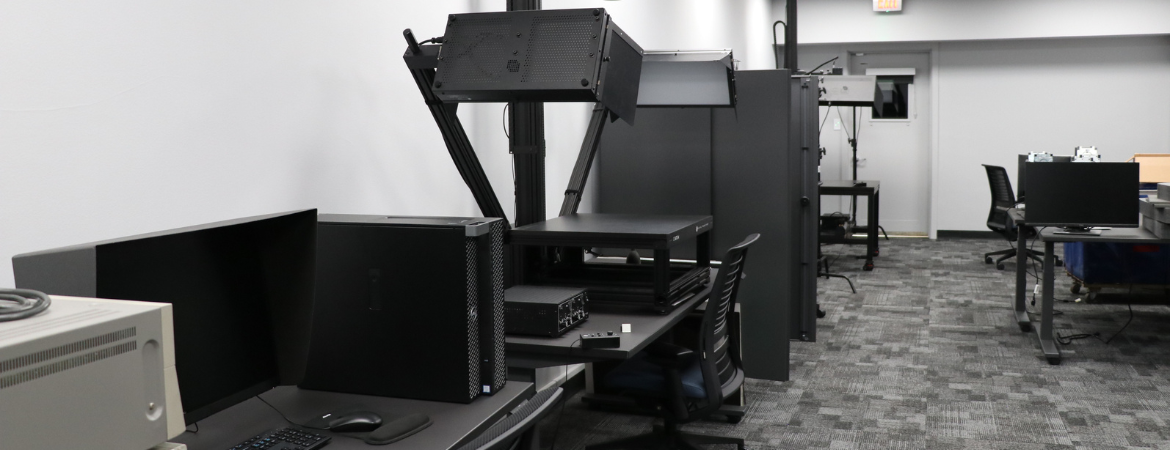
This month, the UCR Library's digitization team moved into its new Digitization Lab on the second floor of the Tomás Rivera Library, a purpose-built workspace designed to streamline the digitization of the Library’s cultural heritage materials.
The Digitization Lab replaces the former workspace in Orbach Library, where the digitization team, led by Digitization Services Specialist Mark Buchholz, faced challenges like frequent transport of delicate materials between library buildings and inconsistent lighting conditions.
The new space was designed with precise imaging requirements in mind. It features spectrally neutral wall paint, high-CRI LED lighting at 6500K, carefully selected furniture that minimizes color reflection, and blackout curtains that create a controlled, consistent environment. As Mark explained, "We try to get everything as spectrally neutral as possible so the light stays clean. It means we get better images from the start and don't have to fix as much afterward."
The lab includes two copy stands, multiple workstations for print and video capture, secure storage cabinets, and dedicated cubbies for student staff. With Special Collections & University Archives (SCUA) and the UCR Library Conservator in Rivera Library as well, the team no longer needs to transport fragile items across campus, reducing risk and saving time.
Current projects include digitizing aerial photographs from the early/mid 1900s in partnership with Geospatial Information Librarian Janet Reyes, scanning historical course catalogs, working through the Tomás Rivera video collection, and continuing the digitization of the Jay Kay and Doris Klein Collection.
Although fully operational, this lab is just one part of a broader effort to strengthen the Library's preservation and digital collections work. A Conservation Lab will come online in 2026 and the addition of a Digital Collections Project Manager will support the growth of UCR Library's digital initiatives.
Together, these developments will enhance how scholars and researchers encounter and use UCR's collections, making rare and historically significant materials easier to discover, more accessible, and better preserved for future research.